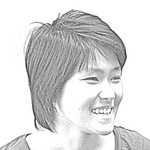Measuring interdisciplinarity: A new tool for Northwestern University
October 21, 2011
In a world in which diverse teams, not specialized individuals, are increasingly called upon to solve the most challenging problems, it is ever more important for educational institutions to demonstrate their ability to train students for an interdisciplinary world. Of course, there are many facets to developing an interdisciplinary educational experience; classes, research projects, extracurricular activities, and student diversity all clearly play an important role in learning how to work with others.
As a means to encourage its students to pursue an interdisciplinary curriculum, The Graduate School at Northwestern University created the Interdisciplinary Clusters in the Humanities and Non-Quantitative Social Sciences program. The clusters actively encourage students to enroll in classes across traditional discipline boundaries, enriching the educational experience of its students. The question is, how much of an impact will the Interdisciplinary Clusters have on cross-discipline enrollment?
To address this question, Simon Greenwold, Senior Associate Dean of The Graduate School, turned to Datascope Analytics to design an interactive dashboard that allows prospective students to “touch” the interdisciplinary fabric at Northwestern. “The ability to visualize academic connections across disciplines serves as an important recruitment and communication tool for us. Datascope provided quality work and a wonderful product for our website that is informative and fun to manipulate.”
Designed during her summer co-op, Suet Yi Lee took the lead in designing two primary views to visualize the graduate student curriculum. The first view is a traditional network-based view. Because the programs are laid out using a force-directed algorithm, programs that have lots of students cross-enrolled in classes tend to be closer together in the diagram. As a result, this view is useful for emphasizing the extent to which the Interdisciplinary Clusters are influencing graduate student enrollment at Northwestern University; programs associated with Interdisciplinary Clusters should (and do!) appear in the same regions in the network map.
The second view is an alternative network view that takes the same information but presents it in a different way. It emphasizes the flow of students from their home programs to the programs in which they take classes. This high-level view allows prospective students to quickly get a sense of the disciplines with which they will be interacting during their graduate experience. It can help them answer interesting questions like where past students in their home programs have traditionally taken classes, and where their classmates might come from when taking a class in a particular subject.







